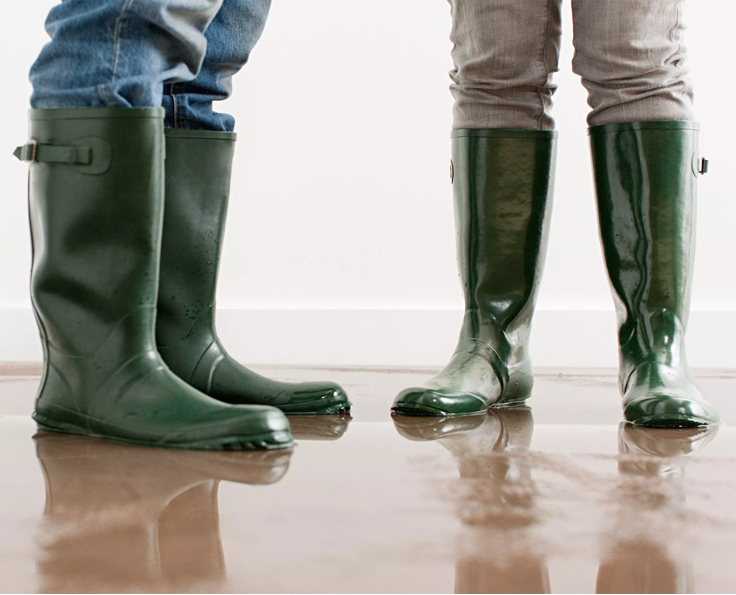Flood Insurance
Flood Insurance
*iSelect does not compare to all home and contents insurers in the market. The availability of policies may change from time to time. Not all policies made available from iSelect’s providers are compared by iSelect and due to commercial arrangements, area or availability, not all policies compared by iSelect will be available to all customers. See below for our range of home and contents insurers. Some policies are only available from iSelect’s call centre or online. Our advice on this website is of general nature and does not consider your situation or needs. Consider if any advice is appropriate for you before acting on it. Learn more.
Compare home and contents insurance the easy way*
Save time and effort by comparing a range of home and contents insurance policies with iSelect
What is Flood Insurance?
What does Flood Insurance usually cover?
What doesn’t Flood Insurance cover?
How much does Flood Insurance cost?
Which parts of Australia are at risk of flooding?
Do I live in a flood-prone area?
Are there waiting periods for Flood Insurance?
Can I get Flood Insurance if I don’t have Home and Contents Insurance?
Where can I find and compare Home and Contents Insurance with flood cover?
What is Flood Insurance?
Having your home and possessions damaged or destroyed in a flood is a terrible event for anyone. On the other hand, your Flood Insurance policy is there to help with the funds to fix what you can and replace what you need to. It can even include cover for temporary accommodation if your house is deemed unliveable due to an insured event and you have to move out while it’s being repaired.
Depending on your Home and Contents Policy, flood cover might be a given or an extra you’ll need to choose and pay a further premium for. Additionally, just because you’re covered for storms won’t mean you’re in the clear for floods either.
What does Flood Insurance usually cover?
In an insurer’s dictionary, a flood is pretty much any time somewhere that’s usually dry ends up covered by water due to a natural or manmade watercourse overflowing, like a lake, canal or creek. This could happen after extensive rainfall or release of water from a dam, for instance.
If you have flood cover as part of your overall Home and Contents Insurance, it covers damage or loss for just about everything in your home, as well as the building itself.
What doesn’t Flood Insurance cover?
While everyday life might leave us playing fast and loose with definitions — like how ‘literally’ no longer means ‘literally’ in some peoples’ dictionaries — insurers tend to be a bit more by the book. That means your Flood Insurance likely won’t cover flooding that hasn’t come about because a nearby creek has breached its banks.
An overflowing and forgotten bath, burst pipes or gutters that weren’t cleaned before a week’s worth of rain can mean your house gets flooded. However, it generally won’t be the sort of flooded that fits your insurer’s definition. The same goes for ‘actions of the sea’, like high and king tides; defects with your home that leave it less than watertight; or simply forgetting you left a window open while a downpour hits (yes, there is something worse than realising you left the washing on the line).
Speaking of washing lines, while these might be covered if you have Flood Insurance as part of your Home Insurance cover, there’s a good chance not everything at your place will fall under your policy. For example, if your fence has seen better days before it gets washed away, that can be a no go. Gardens and driveways also likely won’t be claimable. Your car, too, probably won’t be part of the policy either, even if it’s tucked away in your garage.
To get into the nitty-gritty of what you’re covered for, it might be worth grabbing a highlighter and sitting down with your Product Disclosure Statement (PDS) for your Home and Contents Insurance. It should list what’s in and what’s out when it comes to your policy.
If you do find any coverage gaps, you may be able to find other ways to fill them. For instance, Comprehensive Car Insurance may include flood cover, along with plenty of other desirable protections.
Helpful tip
Have you thought about your property’s structuring, including the fittings and fixtures, when comparing your Flood Insurance options? Some parts of your property — even if it’s right outside your front door — might not be included in your flood cover. It’s just another reason to read your PDS closely!
How much does Flood Insurance cost?
Buying Flood Insurance isn’t quite the same as buying your groceries; there won’t be a set price that everyone gets. Instead, your insurer will decide a premium based on a range of factors. This can include things like:
- How likely your property is to be flooded
- How deep that flooding is expected to be
- How much it would cost to repair and rebuild your home
The more risk, the more likely your premium will be higher.
To figure this all out, your insurer may use flood maps (both current and historical), previous insurance claims from the area and the Insurance Council of Australia’s National Flood Information Database.
Which parts of Australia are at risk of flooding?
As of December 2023, it’s thought that 4.4% of Australian properties could face floods every 20 to 100 years, with many of these properties hailing from Queensland, New South Wales and Victoria.1Insurance Council of Australia – Submission to Parliamentary Flood Inquiry demonstrates acute flood risk
But it’s not just the stats having their say here. Insurers reflect this risk through premiums and policies. For instance, residents of Northern Queensland may find that they aren’t able to get flood cover simply because flooding is part-and-parcel of life above the Tropic of Capricorn. Similarly, the higher chance of flooding in Queensland and New South Wales plays a role in raising insurance premiums in these states above the national median. This makes sense given that two of the most expensive weather events in Australia’s history (or at least since 1967) for insurers were the 2011 Brisbane Floods and the 2022 South-East Queensland and NSW Floods.2Insurance Council of Australia – Insurance Catastrophe Resilience Report 2022-23, p8
Realistically, though, floods can happen anywhere in Australia. They’re also likely to become more common, thanks to the combination of climate change increasing heavy rainfall events and the prevalence of built-up urban environments that can’t necessarily soak up all that rain.3CSIRO – Understanding the causes and impacts of flooding
Source: Insurance Council of Australia – Historical Catastrophe List, January 2024
Do I live in a flood-prone area?
If you’re worried about your place and its flood risk, you don’t have to stay in the dark. You can look at flood maps and studies (the Australian Flood Risk Information Portal can direct you to ones that are relevant for your area). Delving into historical flood records can also be helpful, like where certain floods extended to and how deep the waters were.
You don’t have to research alone though. You could speak with your local council or emergency services organisation, for instance. Your Insurance Provider may also be able to give you an idea of the flood risk your home faces.
Are there waiting periods for Flood Insurance?
Flood Insurance does tend to come with a waiting period, like 72 hours. The waiting period is basically a way to help keep premiums down and prevent panic-buying when it’s been raining for a few days straight (think the great toilet paper shortages of 2020). It’ll usually apply whether you’re getting a fresh Home and Contents Policy or adding flood cover to your existing policy.
Can I get Flood Insurance if I don’t have Home and Contents Insurance?
If you were hoping to skip the Home and Contents Insurance and just jump straight into flood cover, we’re sorry to be the bearer of bad news. You’re unlikely to find a standalone Flood Insurance Policy, but that’s not necessarily a bad thing.
With Home and Contents Insurance, you could be covered in a wide range of situations, from fire to theft. Plus, you may find that the coverage you’re looking for in your Flood Insurance actually falls under the storm umbrella, like damage from rainwater runoff or overflowing storm water drains. If you’re worried about water damage that doesn’t come from the sky, your Home and Contents Insurance Policy may also have you covered for accidental and sudden damage from broken pipes and the like too. As a result, you might find that you’ve got all the water-based cover you want without needing to look into additional policies.
Where can I find and compare Home and Contents Insurance with flood cover?
Whether you’re worried about summer storms or that once-in-a-blue moon rain event, Flood Insurance could mean smooth sailing for you and your home, even if the worst does happen. You can start comparing a range of Home and Contents Insurance, including flood cover options, with iSelect today.* Simply use our online comparison tool or speak to one of our comparison experts on 13 19 20.

.svg)






